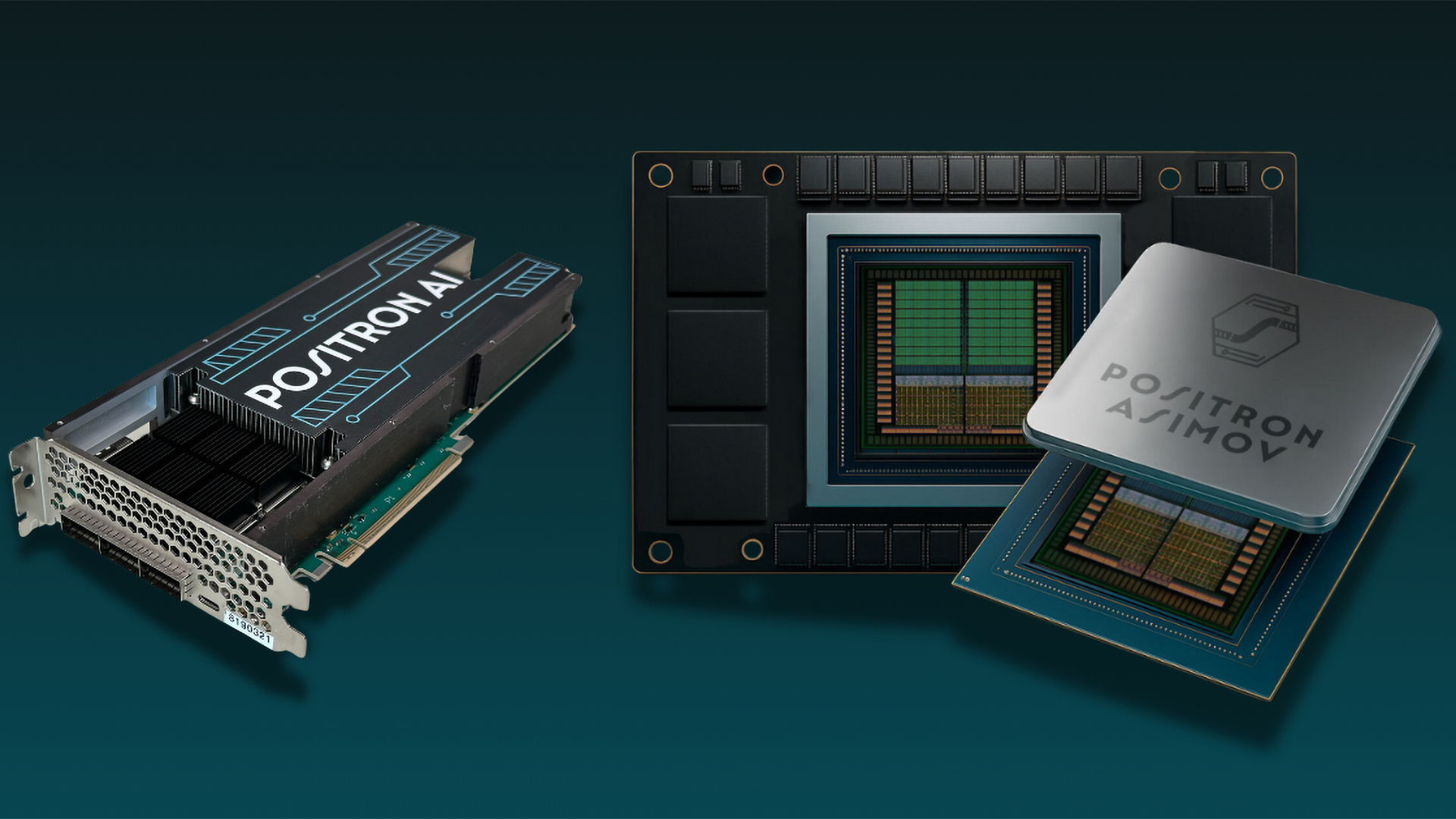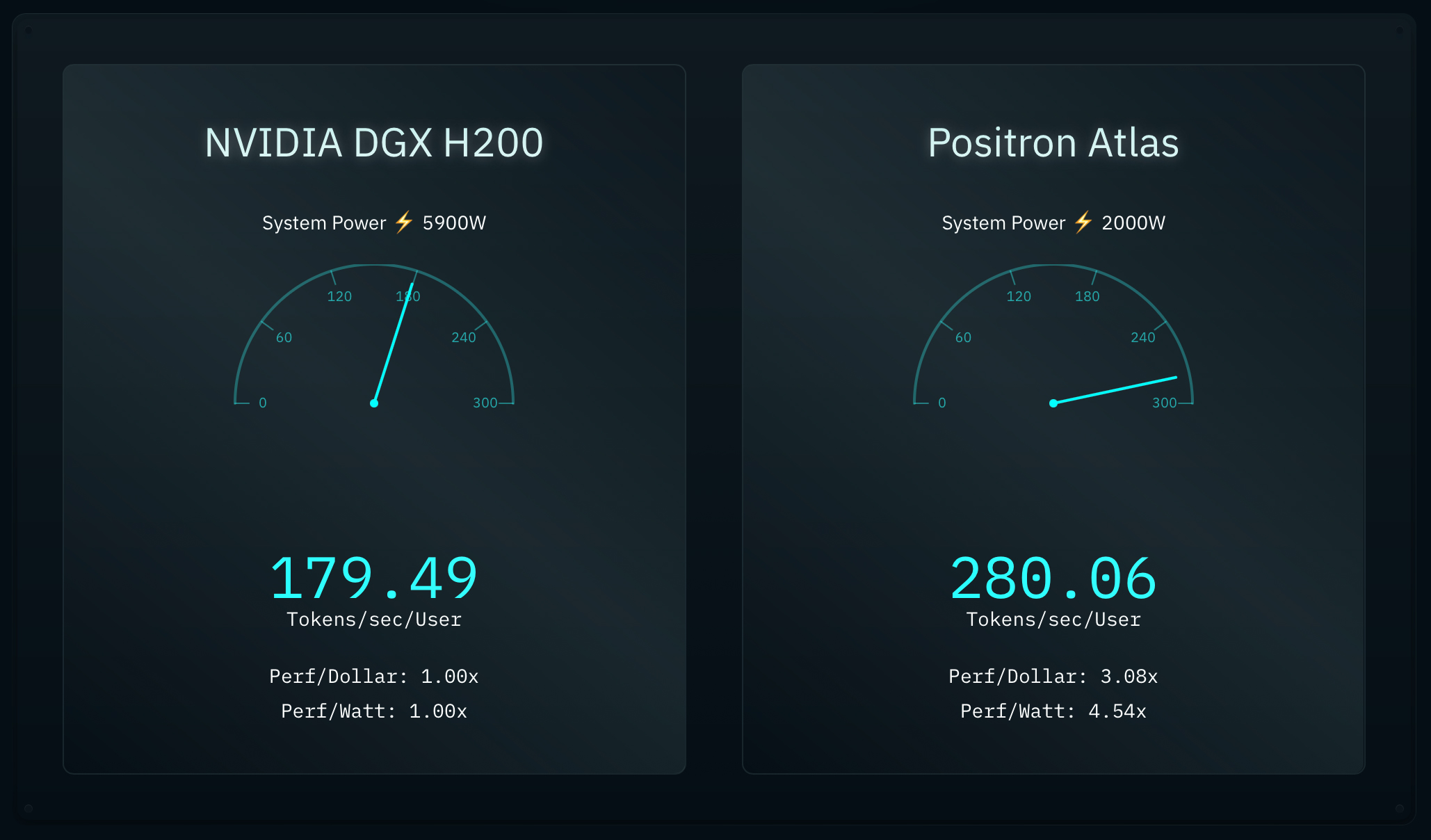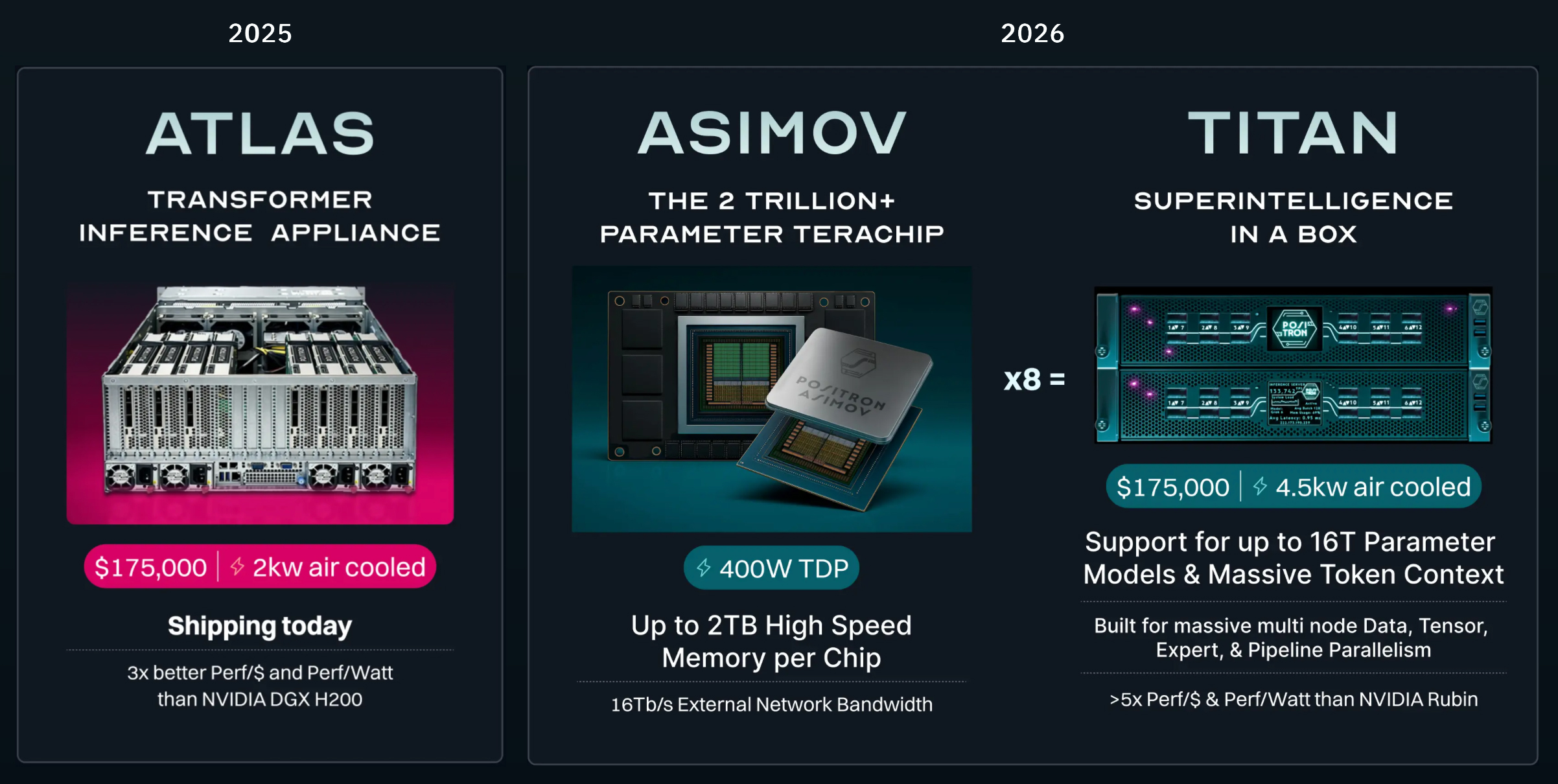Positron AI says its Atlas accelerator beats Nvidia H200 on inference in just 33% of the power — delivers 280 tokens per second per user with Llama 3.1 8B in 2000W envelope

To address concerns about power consumption of systems used for AI inference, hyperscale cloud service provider (CSP) Cloudflare is testing various AI accelerators that are not AI GPUs from AMD or Nvidia, reports the Wall Street Journal. Recently, the company began to test drive Positron AI's Atlas solution that promises to beat Nvidia's H200 at just 33% of its power consumption.
Positron is a U.S.-based company founded in 2023 that develops AI accelerators focused exclusively on inference. Unlike general-purpose GPUs that are designed for AI training, AI inference, technical computing, and a wide range of other workloads, Positron's hardware is built from scratch to perform inference tasks efficiently and with minimal power consumption. Position AI's first-generation solution for large-scale transformer models is called Atlas. It packs eight Archer accelerators and is designed to beat Nvidia's Hopper-based systems while consuming a fraction of power.
Positron AI's Atlas can reportedly deliver around 280 tokens per second per user in Llama 3.1 8B with BF16 compute at 2000W, whereas an 8-way Nvidia DGX H200 server can only achieve around 180 tokens per second per user in the same scenario, while using a whopping 5900W of power, according to a comparison conducted by Positron AI itself. This would make the Atlas three times more efficient in terms of performance-per-watt and in terms of performance-per-dollar compared to Nvidia's DGX H200 system. This claim, of course, requires verification by a third party.
It is noteworthy that Positron AI makes its ASIC hardware at TSMC's Fab 21 in Arizona (i.e., using an N4 or N5 process technology), and the cards are also assembled in the U.S., which makes them an almost entirely American product. Still, since the ASIC is mated with 32GB of HBM memory, it uses an advanced packaging technology and, therefore, is likely assembled in Taiwan.
Positron AI's Atlas systems and Archer AI accelerators are compatible with widely used AI tools like Hugging Face and serve inference requests through an OpenAI API-compatible endpoint, enabling users to adopt them without major changes to their workflows.
Positron has raised over $75 million in total funding, including a recent $51.6 million round led by investors such as Valor Equity Partners, Atreides Management, and DFJ Growth. The company is also working on its 2nd Generation AI inference accelerator dubbed Asimov, an 8-way Titan machine that is expected in 2026 to compete against inference systems based on Nvidia's Vera Rubin platforms.
Positron AI's Asimov AI accelerator will come with 2 TB of memory per ASIC, and, based on an image published by the company, will cease to use HBM, but will use another type of memory. The ASIC will also feature a 16 Tb/s external network bandwidth for more efficient operations in rack-scale systems. The Titan — based on eight Asimov AI accelerators with 16 GB of memory in total — is expected to be able to run models with up to 16 trillion parameters on a single machine, significantly expanding the context limits for large-scale generative AI applications. The system also supports simultaneous execution of multiple models, eliminating the one-model-per-GPU constraint, according to Positron AI.
Get Tom's Hardware's best news and in-depth reviews, straight to your inbox.
The AI industry's accelerating power demands are raising alarms as some massive clusters used for AI model training consume the same amount of power as cities. The situation is only getting worse as AI models are getting bigger and usage of AI is increasing, which means that the power consumption of AI data centers used for inference is also increasing at a rapid pace. Cloudflare is among the early adopters currently testing hardware from Positron AI. By contrast, companies like Google, Meta, and Microsoft are developing their own inference accelerators to keep their power consumption in check.
Follow Tom's Hardware on Google News to get our up-to-date news, analysis, and reviews in your feeds. Make sure to click the Follow button.

Anton Shilov is a contributing writer at Tom’s Hardware. Over the past couple of decades, he has covered everything from CPUs and GPUs to supercomputers and from modern process technologies and latest fab tools to high-tech industry trends.
-
Kindaian ZzZzZ Give me a PCIe expansion card (not 16x as that is already used by the graphics card), that can do 1/10 of that, and used 1/10 of the power (or rater, under the power limit of the PCIe slot). And with an affordable price, then i may consider it.Reply
No need for more than that for my desktop as i'm not intending to build a datacentre.
BUT for the datacentre people, i'm sure they will be interested in that! -
nimble541 ...hands Positron nail and hammer.. while handing Nvidia a coffin.Reply
ASICs will win in the end. -
kealii123 For us consumers, not data centers, being able to fine tune is where the real gold is at. If you can only run a 32b model on your dual 3090s via SLI, it better be fined tuned for your task otherwise Cline or OpenHands isn't going to be much worth to you.Reply
From what I read as a layman, it seems these chips are hyper optimized for inference only, and probably aren't useful for training/tuning. -
PapaMalevolum The article makes no note of it, but this first generation accelerator from Positron is not actually an ASIC - it is an FPGA-based accelerator. I was trying to figure out how a company that was founded only 2 years ago with a couple dozen engineers is already sampling cutting-edge ASIC hardware - it makes sense knowing that it is actually an FPGA platform with physical hardware produced presumably by AMD/Xilinx or Intel/Altera.Reply
If Positron's metric claims are true, it is interesting to see how much more efficient their logical architecture is for inference than Nvidia's, especially given that FPGAs have a significant physical handicap in density and efficiency versus true ASICs and mainstream GPUs+CPUs. -
PapaMalevolum I am also curious to see how Positron's performance and efficiency compare to the internally-developed AI inference accelerators by these same FPGA manufacturers.Reply -
bit_user Reply
The newer ones have hard-wired arithmetic pipelines, which goes some ways towards eliminating the efficiency deficit of FPGA vs. ASIC.PapaMalevolum said:If Positron's metric claims are true, it is interesting to see how much more efficient their logical architecture is for inference than Nvidia's, especially given that FPGAs have a significant physical handicap in density and efficiency versus true ASICs and mainstream GPUs+CPUs.
Furthermore, the XDNA NPUs in AMD's current laptop chips are descended very closely from the design lineage of Xilinx Versal cores. You can see them discussed and analyzed down in the middle of this post:
https://chipsandcheese.com/p/hot-chips-2023-amds-phoenix-soc -
Mr Majestyk Reply
Here's hoping that the current brain-dead brute force approach eschewed by Nvidia, Microsoft, Meta, Telsa etc, is soon outlawed just on the basis of electricity consumption, allowing a new bunch of smarter players to thrive.nimble541 said:...hands Positron nail and hammer.. while handing Nvidia a coffin.
ASICs will win in the end. -
JTWrenn This market is just too capital rich for me to trust any claims of such a huge leap over the leader in the market. I will wait to see how it works, and if it can scale. i bet that will be the issue. Per system it's there but the whole infrastructure you need to run it I wonder if it has the good. Also, every time I see one of these it turns out to be a niche case or something.Reply
I hope the efficiency is true, but I just don't trust this type of claim in this type of market.

